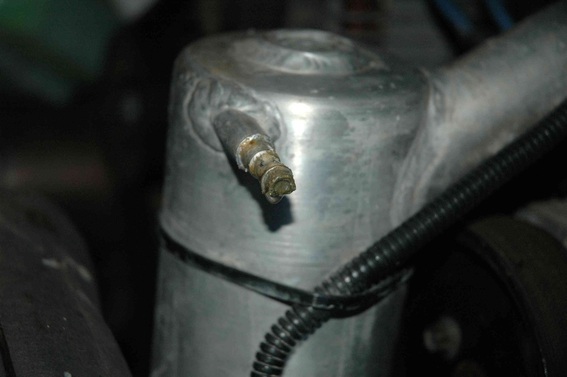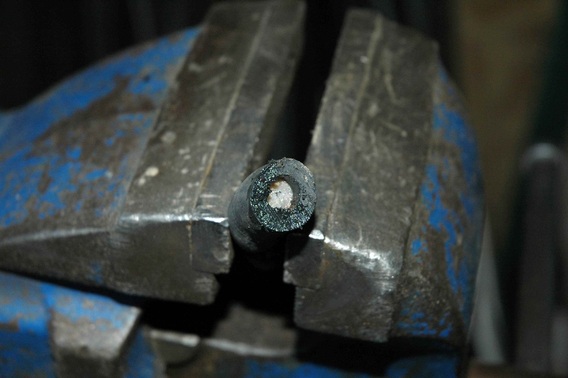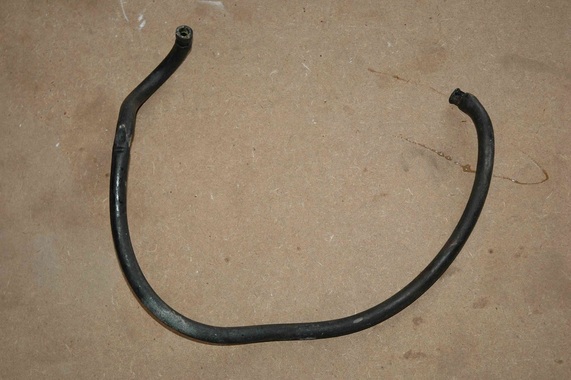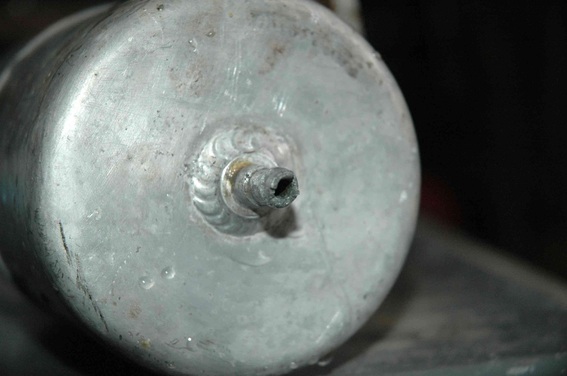TVR Griffith
This information has been gathered from personal experience ansd is believed to be correct but there is no guarantee that this is the case. Anyone using this information does so on the understanding that its use is completely at their own risk and that no liability for errors, omissions or consequential damage to persons or possesions will be accepted by the author or his agents. Prospective users should make their own considered judgement or seek specialist advice as to the accuracy or otherwise of any statements made before using this information in any way.
Cooling System Problems
During my 10 years of ownership the cooling system has generally been very reliable with no real issues until last summer. It was a hot day and after a quick 30 mile dash up the M5 there was a 20 minute queue to enter Prescott Hill Climb. The temperature rose steadily until suddenly one of the heater hoses in the passenger footwell started spraying boiling water everywhere, a good job there was no passenger. Fortunately I had chosen synthetic carpets when re-doing the interior otherwise wool carpet would have been ruined. To get home I bypassed the heater circuits altogether by re routing a rubber heater hose in the engine bay. I could not understand why the heater hose decided to leak as I would have expected the excess pressure to vent from the front overflow tank, this should have been a clue. The problem was forgotten over the winter lay up.
While re-commisioning in the Spring a minor leak developed in the radiator so a replacement was necessary. Aluminium radiators, though costly seem to have a good reputation and I considered fitting one. After chatting with a local but very experienced radiator specialist I was persuaded against this course of action. He said the reason the current brass/copper rad had failed was due to the mounting arrangement direct to the flexing fibre glass body, the tubes had failed adjacent to the nearside end tank. When I mentioned aluminium he said that although they had definite advantages such as weight saving compared to the brass/copper unit they did not have any flexibility. The brass/copper rad would tolerate some movement due to body flexing but the aluminium unit would not as they are completely rigid and would tend to crack. This seemed logical so I decided to have the original re-cored. The opportunity was taken to update all of the coolant hoses to silicon. It was then that the reason for the scalding water leak in the passenger well became apparent. While replacing the hose to the swirl tank I noticed the exit was completely blocked:
This information has been gathered from personal experience ansd is believed to be correct but there is no guarantee that this is the case. Anyone using this information does so on the understanding that its use is completely at their own risk and that no liability for errors, omissions or consequential damage to persons or possesions will be accepted by the author or his agents. Prospective users should make their own considered judgement or seek specialist advice as to the accuracy or otherwise of any statements made before using this information in any way.
Cooling System Problems
During my 10 years of ownership the cooling system has generally been very reliable with no real issues until last summer. It was a hot day and after a quick 30 mile dash up the M5 there was a 20 minute queue to enter Prescott Hill Climb. The temperature rose steadily until suddenly one of the heater hoses in the passenger footwell started spraying boiling water everywhere, a good job there was no passenger. Fortunately I had chosen synthetic carpets when re-doing the interior otherwise wool carpet would have been ruined. To get home I bypassed the heater circuits altogether by re routing a rubber heater hose in the engine bay. I could not understand why the heater hose decided to leak as I would have expected the excess pressure to vent from the front overflow tank, this should have been a clue. The problem was forgotten over the winter lay up.
While re-commisioning in the Spring a minor leak developed in the radiator so a replacement was necessary. Aluminium radiators, though costly seem to have a good reputation and I considered fitting one. After chatting with a local but very experienced radiator specialist I was persuaded against this course of action. He said the reason the current brass/copper rad had failed was due to the mounting arrangement direct to the flexing fibre glass body, the tubes had failed adjacent to the nearside end tank. When I mentioned aluminium he said that although they had definite advantages such as weight saving compared to the brass/copper unit they did not have any flexibility. The brass/copper rad would tolerate some movement due to body flexing but the aluminium unit would not as they are completely rigid and would tend to crack. This seemed logical so I decided to have the original re-cored. The opportunity was taken to update all of the coolant hoses to silicon. It was then that the reason for the scalding water leak in the passenger well became apparent. While replacing the hose to the swirl tank I noticed the exit was completely blocked:
There had also been considerable corrosion to the exit union. After apparently unblocking the exit I checked by attaching the new silicon tube and blowing through it, the blockage remained. Considerable poking with a welding rod was necessary to unblock the tube further into the tank. On checking the old drain tube:
This was also found to be completely blocked and kinked where it was attached to the swirl chamber:
Further checking the overflow bottle :
Found this to be severely corroded and completely blocked also , the pic show the entry tube after clearing it. So the reason the heater tube in the passenger well originally failed must have been because the normal pressure release route i.e. swirl tank via rubber tube to overflow tank and pressure cap was completely blocked. Without looking closely at these components it could easily be overlooked. If the aluminium swirl and overflow tanks corrode to this extent producing enough crud to block all three items what happens in an aluminium radiator? I shall stick with the
original brass/copper rad.
original brass/copper rad.



